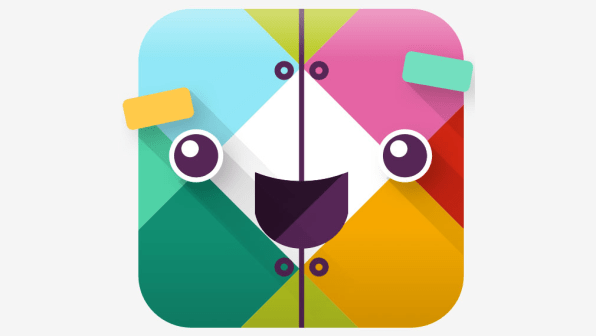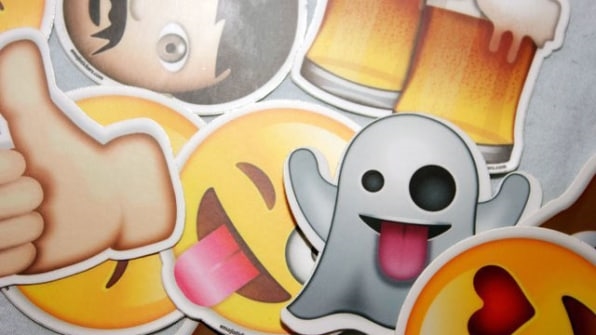Are Your Slack Chats Accidentally Destroying Your Work Culture?
Most of us who use Slack (or other instant messaging platforms) to communicate with colleagues don’t spend a lot of time thinking about how we are saying what we say. It’s just quick chat, after all. But according to Anna McGrath, a partner in culture and transformation at the design firm Godfrey Dadich Partners, we should all be more conscious about this kind of seemingly casual conversation.
“Slack shows us exactly as we are,” McGrath asserts. “We are all a walking billboard for who we are and our current evolution,” she explains, for better or for worse. Taken together over time, unconscious Slack messages can serve to undermine a company culture.
McGrath noticed this several years ago when she was working with a client and talking about fear in the organization. The example this staff member gave was a Slack communication that was intended to be feedback but quickly devolved into public shaming. Although McGrath doesn’t recall the particulars of the message, she does remember that it was delivered in a public channel with 25 members, and it was the first time this person had heard this feedback.
“Electronic communication can be quite challenging,” McGrath acknowledges, because the person “speaking” isn’t right there in the moment. Still, she says, the tone of the message made the recipient feel worthless. Other reports indicate that even “simple” Slack chats can exacerbate sexism at work (hello mansplaining) much the way other social media has been used to threaten or silence underrepresented minorities.
Such feelings can translate to an employee feeling like they don’t belong at the organization and erode engagement and productivity.
But can we communicate with more empathy on a platform that isn’t inherently designed to encourage it?

Can AI Fix Our Unconscious Slip-Ups?
Some believe that artificial intelligence (AI) can be used to solve problems for a human’s unconscious behavior. Andrew Konya, the founder and CEO of Remesh, a software company that uses AI to help conduct research, believes this is a problem that is actually well-suited to be tackled by AI-based natural language processing (NLP) approaches that currently exist.
It’s already possible to conduct sentiment analysis on Slack like Vibe. Slack also promotes a way for developers to build their own sentiment analysis bot to scour through message tone and surface the most pervasive emotion.
Konya says this is not without its challenges. “From a machine learning perspective, this is a text classification problem,” says Konya. He says that means it can be done by building a language classifier that takes a Slack message as input and outputs a message’s classification as “contains male-biased language,” “contains no bias,” “contains female biased language,” for example.
But the accuracy of this system is more likely to be limited by the quality of the data set used to train the machine to read the messages, rather than the tech itself. “Ideally, they would be working with psychologists and linguists to compile a comprehensive and representative data set,” Konya says, which contains extensive examples of biased and unbiased language.

What About Good Old-Fashioned Self-Awareness?
McGrath’s approach is simpler and requires no tool except self-awareness. “Ask yourself, what is my intention to communicate?” she posits. Ideally, it is either to share or request information or ask someone to take an action. That last one needs to be vetted to ensure that a Slack query is really the best way to approach that person. It’s rarely the best medium to clarify decision making, McGrath observes, and should never be used to sort out an emotionally charged issue.
“Clear expectations are essential,” she adds. “Laying a foundation for what should be shared on Slack, when, and how,” McGrath says, will help keep Slack from becoming “just another communication swamp.”
This can happen, she says, when an individual’s unconscious desire to be right and to be valuable to the organization supersedes their being in a place of discovery. When you are communicating simply to discover new information, fear and failure aren’t naturally a part of the dialogue, McGrath says. But most people show up with an unconscious commitment to be right, which puts them immediately into a triangle of “hero, victim, or villain,” she says. No matter which part you play in that trio (“I’m a hero because I’m right,” “I’m a victim because I was wronged, but I’m still right,” etc.), it doesn’t foster conscious communication that allows all members of the channel to converse and exchange ideas productively.
McGrath recognizes that most workers can’t get themselves to shift out of that mode, much less recognize they’re in it during the course of a regular workday. She suggests that we need “gentle reminders, not judgmental cops.” Having a hall monitor grade our communications just perpetuates a fear-based triangle. Instead, she recommends each person seek out a few trusted associates (both within and outside their organization) to help when they feel like they are pushing too hard to be right instead of merely to discover and learn. In this way, individuals can train themselves to take a step back before having any more conversation.

Conscious Emojis?
In addition to time-outs with trusted colleagues, McGrath would love to see Slack implement a few conscious emojis or “shift-ojis,” as she likes to say. We know how emojis can add a sometimes necessary personality injection to written communication. In addition to the full set of smileys, McGrath would include ones for breathing, a glass of water, a walk around the block, or even ones to signify a request for a coach or buddy. In this way, a small picture could shift the conversation into response and solution mode.
Until Slack debuts these “shift-ojis,” McGrath encourages mindfulness at all times. Being conscientious of burying or piggybacking on your teammate’s post will help everyone be more productive,” she adds. Being a loving presence to a channel, thread, or board, is about more than that, she points out. “You can live the purpose of the organization, and your individual purpose,” says McGrath.
(56)



